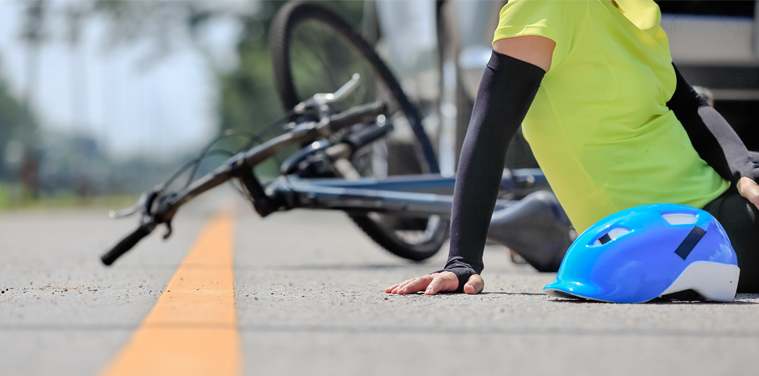Popular Blogs

Are you a cyclist? Do you also have the preconception that if you are ever in an accident with a motor vehicle, the liability will automatically fall on the motorist? If so, then you should know that it is not so. Both the cyclist and motorist can be legally held liable for causing or contributing to the occurrence of a traffic accident. Therefore, you must understand the laws and regulations used to determine fault when evaluating an accident claim and use the knowledge to protect your rights. The information is also important to ensure you receive fair compensation for your damages and the motorist does not get away without paying the appropriate fines. Let’s take a look at the factors that influence fault determination in a motor vehicle-bicycle accident.
Although bicyclists have lesser protection as compared to motorists when on the road, they have the same duty of care as any other driver on the road; simply put, both bicyclists and motorists are legally obliged to operate their vehicle reasonably and ensure that their behavior does not cause hurt or cause damage to any other road user. This means any road user, be it a bicyclist, pedestrian, or motorist, can be legally held liable for causing or contributing to a road accident.
Another question that many people put forth is what is considered a failure to uphold the duty of care? A failure to uphold the duty of care is evaluated by comparing the road user’s actions in question with those of a reasonable one. This means the person in question failed to take the reasonable steps that any sane and average road user would have taken. The term used to define this is “objective standard.” Therefore, any person who fails to meet the objective standard of care is in a breach of their duty of care.
As mentioned above, a motorist has the legal duty of behaving reasonably to protect themselves and others. This includes:

In addition to following the basic traffic rules, a cyclist’s duty of care includes:
If a motorist or cyclist is in a breach of their duty, they can be held partially or completely liable for the accident.
When determining liability, courts look at the following four elements:
The four elements are used to determine whose negligence caused the accident and what damages were caused due to it. This also becomes the basis for deciding the compensation that you will receive for the damages you incur.
These laws apply specifically to cyclists. Although there is no federal law about cyclists wearing helmets, some state, county, and local laws make it mandatory for riders to wear helmets. If you were in a motor vehicle-bicycle accident and were not wearing a helmet in such states, you will be considered partially at fault for the injuries or damages you sustain. Riding without a helmet can even be used as a reason to deflect blame, even in states where there are no regulations or laws regarding wearing helmets.
The aforementioned factors are used to determine fault in a motor vehicle-bicycle accident. If you know and prove that the motorist’s negligence was the sole reason that caused the accident, then the vehicle’s driver will be completely at fault and liable to compensate you for all the damages you incur. However, the compensation you receive can be impacted drastically if you even partially contributed to the accident. States follow one of the two shared fault models to assess the compensation you receive for the damages you incurred:
The contributory negligence model is a harsh rule used in only five states across the United States, namely Maryland, Alabama, Virginia, North Carolina, and Washington DC. Under the shared fault model, you will not receive any compensation even if your negligence contributed 1% to causing the accident.
The model is used by the majority of states with variations across the United States. In its pure form, the comparative negligence model will reduce your compensation by a percentage equivalent to the percentage of your responsibility in causing the accident. For example, this means you will only receive 80% of the total compensation if you are found to be 20% at fault for the accident.
In its modified form, the comparative negligence model bars an individual from receiving any compensation if their responsibility for the fault exceeds 50%. For example, this means you will not receive any compensation if proven to be 51% at-fault for an accident with a motor vehicle.
If you have been in an accident with a motor vehicle and are looking to build a claim, you must consider the aforementioned factors. The best way to recover your compensation is to hire a bicycle accident attorney to help you prove your claim and protect you from losing out on compensation.